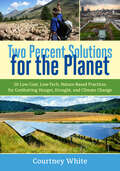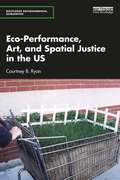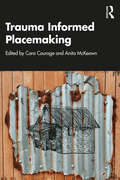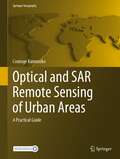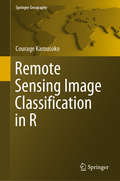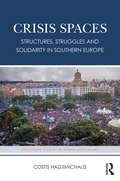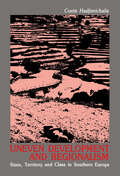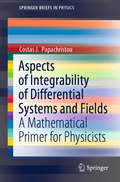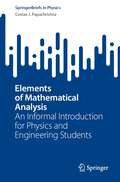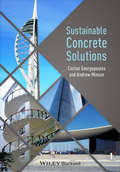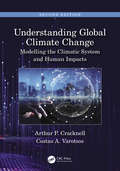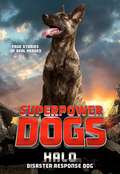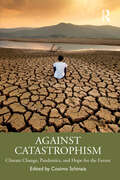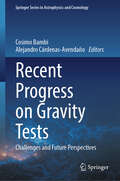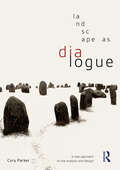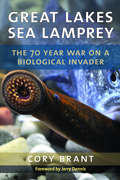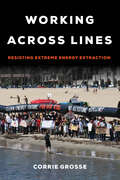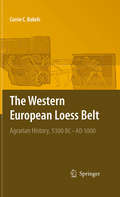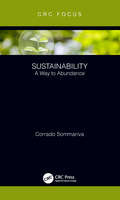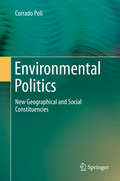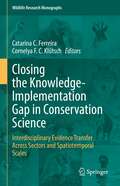- Table View
- List View
Two Percent Solutions for the Planet: 50 Low-Cost, Low-Tech, Nature-Based Practices for Combatting Hunger, Drought, and Climate Change
by Courtney WhiteTwo Percent Solutions for the Planet profiles fifty innovative practices that soak up carbon dioxide in soils, reduce energy use, sustainably intensify food production, and increase water quality. The &“two percent&” refers to: the amount of new carbon in the soil needed to reap a wide variety of ecological and economic benefits; the percentage of the nation&’s population who are farmers and ranchers; and the low financial cost (in terms of GDP) needed to get this work done.As White explained in Grass, Soil, Hope, a highly efficient carbon cycle captures, stores, releases, and recaptures biochemical energy, mitigating climate change, increasing water storage capacities in soil, and making green plants grow. Best of all, we don&’t have to invent anything new—a wide variety of innovative ideas and methods that put carbon back into the soil have been field-tested and proven to be practical and profitable. They&’re mostly low-tech, too, relying on natural resources such as sunlight, green plants, animals, compost, beavers, creeks, and more.In Two Percent Solutions for the Planet, White expands what he calls the &“regenerative toolbox,&” to include holistic grazing, edible forests, biochar, weed-eating livestock, food co-ops, keyline plowing, restoration agriculture, bioenergy, aquaponics, animal power, Farm Hack, bees, bears, wildlife corridors, rainwater harvesting, native seeds, and various other projects from across the United States, as well as in Canada, Europe, and Australia. These short, engaging success stories will help readers connect the dots between diverse, exciting, and pragmatic practices, and inspire them to dig deeper into each individual story and concept, energized by the news that solutions do exist.
Eco-Performance, Art, and Spatial Justice in the US (Routledge Environmental Humanities)
by Courtney B. RyanIn Eco-Performance, Art, and Spatial Justice in the US, Courtney B. Ryan traces how urban artists in the US from the 1970s until today contend with environmental domestication and spatial injustice through performance. In theater, art, film, and digital media, the artists featured in this book perform everyday, spatialized micro-acts to contest the mutual containment of urbanites and nonhuman nature. Whether it is plant artist Vaughn Bell going for a city stroll in her personal biosphere, photographer Naima Green photographing Black urbanites in lush New York City parks, guerrilla gardeners launching seed bombs into abandoned city lots, or a satirical tweeter parodying BP’s response to the 2010 Deepwater Horizon oil spill, the subjects in this book challenge deeply engrained Western directives to domesticate nonhuman nature. In examining how urban eco-artists perform alternate ecologies that celebrate the interconnectedness of marginalized human, vegetal, and aquatic life, Ryan suggests that small environmental performances can expose spatial injustice and increase spatial mobility. Bringing a performance perspective to the environmental humanities, this interdisciplinary text offers readers stymied by the global climate crisis a way forward. It will appeal to a wide range of students and academics in performance, media studies, urban geography, and environmental studies.
Trauma Informed Placemaking
by Anita McKeown Courage, Edited by CaraTrauma Informed Placemaking offers an introduction to understanding trauma and healing in place. It offers insights that researchers and practitioners can apply to their place-based practice, learning from a global cohort of place leaders and communities.The book introduces the ethos and application of the trauma-informed approach to working in place, with references to historical and contemporary trauma, including trauma caused by placemakers. It introduces the potential of place and of place practitioners to heal. Offering 20 original frameworks, toolkits and learning exercises across 33 first- and third-person chapters, multi-disciplinary insights are presented throughout. These are organised into four sections that lead the reader to an awareness of how trauma and healing operate in place. The book offers a first gathering of the current praxis in the field – how we can move from trauma in place to healing in place – and concludes with calls to action for the trauma-informed placemaking approach to be adopted.This book will be essential reading for students, researchers and practitioners interested in people and places, from artists and architects, policy makers and planners, community development workers and organisations, placemakers, to local and national governments. It will appeal to the disciplines of human geography, sociology, politics, cultural studies, psychology and to placemakers, planners and policymakers and those working in community development.
Optical and SAR Remote Sensing of Urban Areas: A Practical Guide (Springer Geography)
by Courage KamusokoThis book introduces remotely sensed image processing for urban areas using optical and synthetic aperture radar (SAR) data and assists students, researchers, and remote sensing practitioners who are interested in land cover mapping using such data. There are many introductory and advanced books on optical and SAR remote sensing image processing, but most of them do not serve as good practical guides. However, this book is designed as a practical guide and a hands-on workbook, where users can explore data and methods to improve their land cover mapping skills for urban areas. Although there are many freely available earth observation data, the focus is on land cover mapping using Sentinel-1 C-band SAR and Sentinel-2 data. All remotely sensed image processing and classification procedures are based on open-source software applications such QGIS and R as well as cloud-based platforms such as Google Earth Engine (GEE). The book is organized into six chapters. Chapter 1 introduces geospatial machine learning, and Chapter 2 covers exploratory image analysis and transformation. Chapters 3 and 4 focus on mapping urban land cover using multi-seasonal Sentinel-2 imagery and multi-seasonal Sentinel-1 imagery, respectively. Chapter 5 discusses mapping urban land cover using multi-seasonal Sentinel-1 and Sentinel-2 imagery as well as other derived data such as spectral and texture indices. Chapter 6 concludes the book with land cover classification accuracy assessment.
Remote Sensing Image Classification in R (Springer Geography)
by Courage KamusokoThis book offers an introduction to remotely sensed image processing and classification in R using machine learning algorithms. It also provides a concise and practical reference tutorial, which equips readers to immediately start using the software platform and R packages for image processing and classification. This book is divided into five chapters. Chapter 1 introduces remote sensing digital image processing in R, while chapter 2 covers pre-processing. Chapter 3 focuses on image transformation, and chapter 4 addresses image classification. Lastly, chapter 5 deals with improving image classification. R is advantageous in that it is open source software, available free of charge and includes several useful features that are not available in commercial software packages. This book benefits all undergraduate and graduate students, researchers, university teachers and other remote- sensing practitioners interested in the practical implementation of remote sensing in R.
Crisis Spaces: Structures, Struggles and Solidarity in Southern Europe (Routledge Studies in Human Geography)
by Costis HadjimichalisThe financial malaise that has affected the Eurozone countries of southern Europe – Spain, Portugal, Italy and, in its most extreme case, Greece – has been analysed using mainly macroeconomic and financial explanations. This book shifts the emphasis from macroeconomics to the relationship between uneven geographical development, financialization and politics. It deconstructs the myth that debt, both public and private, in Southern Europe is the sole outcome of the spendthrift ways of Greece, Spain, Italy and Portugal, offering a fresh perspective on the material, social and ideological parameters of the economic crisis and the spaces where it unfolded. Featuring a range of case examples that complement and expand the main discussion, Crisis Spaces will appeal to students and scholars of human geography, economics, regional development, political science, cultural studies and social movements studies.
Uneven Development and Regionalism: State, Territory and Class in Southern Europe
by Costis HadjimichalisPublished in the year 1986, Uneven Development and Regionalism is a valuable contribution to the field of Geography.
Aspects of Integrability of Differential Systems and Fields: A Mathematical Primer for Physicists (SpringerBriefs in Physics)
by Costas J. PapachristouThis book serves as an introduction to the concept of integrability as it applies to systems of differential equations as well as to vector-valued fields. The author focuses on specific aspects of integrability that are often encountered in a variety of problems in applied mathematics, physics and engineering. The following general cases of integrability are examined: (a) path-independence of line integrals of vector fields on the plane and in space; (b) integration of a system of ordinary differential equations by using first integrals; and (c) integrable systems of partial differential equations. Special topics include the integration of analytic functions and some elements from the geometric theory of differential systems. Certain more advanced subjects, such as Lax pairs and Bäcklund transformations, are also discussed. The book is written at an intermediate level for educational purposes. The presentation is as simple as the topics allow, often sacrificing mathematical rigor in favor of pedagogical efficiency.
Elements of Mathematical Analysis: An Informal Introduction for Physics and Engineering Students (SpringerBriefs in Physics)
by Costas J. PapachristouThis book provides a comprehensive yet informal introduction to differentiating and integrating real functions with one variable. It also covers basic first-order differential equations and introduces higher-dimensional differentiation and integration. The focus is on significant theoretical proofs, accompanied by illustrative examples for clarity. A comprehensive bibliography aids deeper understanding. The concept of a function's differential is a central theme, relating to the "differential" within integrals. The discussion of indefinite integrals (collections of antiderivatives) precedes definite integrals, naturally connecting the two. The Appendix offers essential math formulas, exercise properties, and an in-depth exploration of continuity and differentiability. Select exercise solutions are provided. This book suits short introductory math courses for novice physics/engineering students. It equips them with vital differential and integral calculus tools for real-world applications. It is also useful for first-year undergraduates, reinforcing advanced calculus foundations for better Physics comprehension.
Sustainable Concrete Solutions
by Andrew Minson Costas GeorgopoulosThe challenges facing humanity in the 21st century include climate change, population growth, overconsumption of resources, overproduction of waste and increasing energy demands. For construction practitioners, responding to these challenges means creating a built environment that provides accommodation and infrastructure with better whole-life performance using lower volumes of primary materials, less non-renewable energy, wasting less and causing fewer disturbances to the natural environment. Concrete is ubiquitous in the built environment. It is therefore essential that it is used in the most sustainable way so practitioners must become aware of the range of sustainable concrete solutions available for construction. While sustainable development has been embedded into engineering curricula, it can be difficult for students and academics to be fully aware of the innovations in sustainable construction that are developed by the industry. Sustainable Concrete Solutions serves as an introduction to and an overview of the latest developments in sustainable concrete construction. It provides useful guidance, with further references, to students, researchers, academics and practitioners of all construction disciplines who are faced with the challenge of designing, specifying and constructing with concrete.
Understanding Global Climate Change: Modelling the Climatic System and Human Impacts
by Arthur P Cracknell Costas A VarotsosClimate change, a familiar term today, is far more than just global warming due to atmospheric greenhouse gases including CO2. In order to understand the nature of climate change, it is necessary to consider the whole climatic system, its complexity, and the ways in which natural and anthropogenic activities act and influence that system and the environment. Over the past 20 years since the first edition of Understanding Global Climate Change was published, not only has the availability of climate-related data and computer modelling changed, but our perceptions of it and its impact have changed as well. Using a combination of ground data, satellite data, and human impacts, this second edition discusses the state of climate research today, on a global scale, and establishes a background for future discussions on climate change. This book is an essential reference text, relevant to any and all who study climate and climate change. Features Provides a thought-provoking and original approach to the science of climate. Emphasises that there are many factors contributing to the causation of climate change. Clarifies that while anthropogenic generation of carbon dioxide is important, it is only one of several human activities contributing to climate change. Considers climate change responses needed to be undertaken by politicians and society at national and global levels. Totally revised and updated with state-of-the-art satellite data and climate models currently in operation around the globe.
Superpower Dogs
by CosmicMeet the real-life superheroes who walk--and bark--among us in this stunning photographic picture book featuring the stars of the IMAX film Superpower Dogs! Every single day, dogs around the world use their amazing abilities to help save lives. In over fifty dynamic photos and a fun, fact-filled text, meet some of the incredible canines who save lives, fight crime, and help people heal. Superpower Dogs is a fun and inspiring read for animal lovers of all ages, celebrating the remarkable work of heroic dogs.
Superpower Dogs: Avalanche Rescue Dog
by CosmicJoin Henry, one of the stars of the IMAX film Superpower Dogs, as he emBARKS on a journey to become an avalanche rescue dog in this gripping true story, perfect for fans of Max! In Whistler, British Columbia, dogs can be found riding chairlifts, perched on skiers' shoulders, and even descending from helicopters--all in the race against time to save people caught in the path of an avalanche. Meet Henry, a lovable border collie, and the team of dogs and human partners he works with in the beautiful and sometimes dangerous mountains. Through the action-packed narrative, informative and engaging interstitials, and eight pages of stunning full-color photographs, young readers will experience real-life rescues and gain a new appreciation for the bond between dogs and humans.
Superpower Dogs: Disaster Response Dog
by CosmicJoin Halo, one of the stars of the IMAX film Superpower Dogs, as she emBARKS on a journey to become a disaster response dog in this gripping nonfiction story, perfect for fans of Max! Dutch Shepherd puppy Halo has spent almost her whole life preparing for one job: finding people who are trapped in disaster zones. Her bond with her human partner, Fire Captain Cat, is unshakeable, and together, they can overcome any obstacle. But training to be an Urban Search and Rescue dog is tough, and it's going to take all of Cat's dedication and Halo's courage to succeed. Enhanced with breathtaking photographs and amazing canine facts, this true story of a hero's journey from adorable puppy to skilled Urban Search and Rescue dog is proof that real life superheroes walk--and bark--among us.
Against Catastrophism: Climate Change, Pandemics, and Hope for the Future
by Cosimo SchinaiaAgainst Catastrophism explores catastrophism from multiple vantage points and considers the impact of ongoing crisis on individuals.Bringing together contributors from psychoanalysis, economics, anthropology, and gastroenterology, this book explores themes including fossil fuel culture, social movements like Extinction Rebellion, the COVID-19 pandemic, media messaging, and the future of food supply chains. By assessing the value of a constant barrage of information about catastrophes and considering the need for a containing environment, the chapters explore how we can avoid endorsing a closed-off vision of the future and instead unlock possibilities. The book concludes with a discussion of optimism, radical hope, and how we can put forward a new narrative on nature.Against Catastrophism will be of great interest to psychoanalysts, psychologists, psychiatrists, economists, anthropologists, sociologists, food scientists, environmentalists, ecologists, politicians, and communication experts.
Recent Progress on Gravity Tests: Challenges and Future Perspectives (Springer Series in Astrophysics and Cosmology)
by Cosimo Bambi Alejandro Cárdenas-AvendañoEinstein's theory of general relativity is one of the pillars of modern physics and it is our standard framework for describing gravitational fields and the spacetime structure. So far, general relativity has passed all experimental tests and agrees with observations. However, the past few years have seen remarkable observational improvements and new techniques that continually challenge the theory's predictions: routinely detect the gravitational wave signals from the coalescence of black holes and neutron stars; can image the supermassive black holes at the center of our Galaxy and of the galaxy M87; can analyze the properties of the X-ray radiation emitted from the very inner part of the accretion disks of several black holes; and keep improving laboratory and Solar System experiments. This book offers an updated self-consistent overview, future perspectives, and challenges of experimental and observational tests of gravity, with both gravitational and electromagnetic spectra. It includes the recent results of laboratory tests of gravity, solar system experiments, tests of gravity in the strong-field regime with astrophysical compact objects, and tests of gravity on large scales with cosmological observations.
Landscape as Dialogue: A New Approach to Site Analysis and Design
by Cory ParkerLandscape as Dialogue redefines the process of understanding landscapes for students and practitioners so they can create more integrated, healthy places. Traditional site analysis sees the landscape as a series of components, evaluated individually, before being put back together. This perpetuates existing social hierarchies, maintains the need for high energy inputs and trumpets iconic designs that contribute to gentrification. This book examines the process of landscape dialogue as a natural give and take with the environment, drawing on diverse and challenging writings from design, geography, philosophy and ecological sciences to probe the relationship between humans and landscape. Each chapter begins with a discussion of a theoretical approach to landscape dialogue, such as perception, information or critique, before offering a series of practical steps and representation techniques that designers can use in understanding the landscape. Detailed illustrated case studies from around the world, including Hawaii, the American Southwest, Japan, China, Mexico, Turkey and Peru, explore the book’s lessons in practice. This must-read book offers a radical alternative to conventional analytical approaches, inspiring designers to fully engage in the landscape to ultimately generate ecologically considered places.
Great Lakes Sea Lamprey: The 70 Year War on a Biological Invader
by Cory BrantThe stuff of nightmares in both their looks and the wounds inflicted on their victims, sea lampreys (Petromyzon marinus) are perhaps the deadliest invasive species to ever enter the Great Lakes. At the invasion’s apex in the mid-20th century, harvests of lake trout (Salvelinus namaycush), the lampreys’ preferred host fish in the Great Lakes, plummeted from peak annual catches of 15 million pounds to just a few hundred thousand pounds per year—a drop of 98% in only a few decades. Threatening the complete collapse of the fishery, the sea lamprey invasion triggered an environmental awakening in the region and prompted an international treaty that secured unprecedented cooperation across political boundaries to protect the Great Lakes. Fueled by a pioneering scientific spirit, the war on Great Lakes sea lampreys led to discoveries that are the backbone of the program that eventually brought the creature under control and still protects the largest freshwater ecosystem in the world to this day. Great Lakes Sea Lamprey draws on extensive interviews with individuals who experienced the invasion firsthand as well as a trove of unexplored archival materials to tell the incredible story of sea lamprey in the Great Lakes—what started the invasion, how it was halted, and what this history can teach us about the response to biological invaders in the present and future. Richly illustrated with color and black & white photographs, the book will interest readers concerned with the health of the Great Lakes, the history of the conservation movement, and the ongoing threat of invasive species.
Working across Lines: Resisting Extreme Energy Extraction
by Corrie GrosseHow are communities uniting against fracking and tar sands to change our energy future? Working across Lines offers a detailed comparative analysis of climate justice coalitions in California and Idaho—two states with distinct fossil fuel histories, environmental contexts, and political cultures. Drawing on ethnographic evidence from 106 in-depth interviews and three years of participant observation, Corrie Grosse investigates the ways people build effective energy justice coalitions across differences in political views, race and ethnicity, age, and strategic preferences. This book argues for four practices that are critical for movement building: focusing on core values of justice, accountability, and integrity; identifying the roots of injustice; cultivating relationships among activists; and welcoming difference. In focusing on coalitions related to energy and climate justice, Grosse provides important models for bridging divides to reach common goals. These lessons are more relevant than ever.
The Western European Loess Belt
by Corrie C. BakelsThis book deals with the early history of agriculture in a defined part of Western Europe: the loess belt west of the river Rhine. It is a well-illustrated book that integrates existing and new information, starting with the first farmers and ending when food production was no longer the chief source of livelihood for the entire population. The loess belt was chosen because it is a region with only one type of soil and climate as these are all-important factors where farming is concerned. Subjects covered are crops, crop cultivation, livestock and livestock handling, the farm and its yard, and the farm in connection with other farms. Crop plants and animals are described, together with their origin. New tools such as the plough, wheen, wagon and scythe are introduced. Groundplans of farm buildings, the history of the outhouse and the presence or absence of hamlets are presented as well, and the impact of farming on the landscape is not forgotten. The loess belt was not an island and the world beyond its boundaries was important for new ideas, new materials and new people. Summarising six millennia of agriculture, the thinking in terms of the Western European loess belt as one agricultural-cultural unit seems justified.
Sustainability: A Way to Abundance
by Corrado SommarivaThe book describes mechanisms whereby the Earth naturally thrives towards energy and resources abundance and how unsustainable industrial practices alter this trend. Introduces the concept of earth energy and associates this to the conditions of the biosphere and emphasizes the possibilities with inexpensive wind and solar energy Provides a good quantification of the concepts of sustainability and its effects on the environmentn and critical analysis and updates to the relationships between the environmental impact, affluence and technology
Environmental Politics
by Corrado PoliA change in the way humans relate to nature could be the starting point for a new politics, which will also affect relations among humans. A new approach would help to radically transform the production system, not because it is unjust in the usually considered social terms, but because it endangers nature and humanity. So far, the citizens' grassroots organizations have failed to win broad consensus and political power in the representative institutions. When the time comes to transform the single environmental issue into an electoral platform, environmentalists lose unity and effectiveness since they lack a common political vision and an ensuing strategy. On the other hand European politics is rapidly transforming because the challenge brought by so-called populist movements. We need to transform activists' shared emotions and attitudes into political ideologies and platforms. Moreover, a new educational process and a new science politics are necessary to reform environmental policy.
Closing the Knowledge-Implementation Gap in Conservation Science: Interdisciplinary Evidence Transfer Across Sectors and Spatiotemporal Scales (Wildlife Research Monographs #4)
by Catarina C. Ferreira Cornelya F. C. KlütschThis book aims to synthesize the state of the art on biodiversity knowledge exchange practices to understand where and how improvements can be made to close the knowledge-implementation gap in conservation science and advance this interdisciplinary topic. Bringing together the most prominent scholars and practitioners in the field, the book looks into the various sources used to produce biodiversity knowledge - from natural and social sciences to Traditional Ecological Knowledge and Citizen Science - as well as knowledge mobilization approaches to highlight the key ingredients that render successful conservation action at a global scale. By doing so, the book identified major current challenges and opportunities in the field, for different sectors that generate, mobilize, and use biodiversity knowledge (like academia, boundary organizations, practitioners, and policy-makers), to further develop cross-sectorial knowledge mobilization strategies and enhance evidence-informed decision-making processes globally.
Earth Materials
by Anthony R. Philpotts Cornelis KleinThe fundamental concepts of mineralogy and petrology are explained in this highly illustrated, full-color textbook to create a concise overview for students studying Earth materials. The relationship between minerals and rocks and how they relate to the broader Earth, materials and environmental sciences is interwoven throughout. Beautiful photos of specimens and Crystal-Maker's 3-D illustrations allow students to easily visualize minerals, rocks and crystal structures. Review questions at the end of chapters allow students to check their understanding. The importance of Earth materials to human cultural development and the hazards they pose to humans are discussed in later chapters. This ambitious, wide-ranging book is written by two world-renowned textbook authors each with over 40 years of teaching experience, who bring that experience to clearly convey the important topics.
The Manual of Mineral Science (23rd Edition)
by Cornelis Klein Barbara DutrowThe book offers readers coverage of mineralogy and crystallography, integrating complete coverage of concepts and principles with a more systematic and descriptive treatment of mineralogy.
